Top 10 Castles in the United Kingdom
Current researchers debate what the term "castle" covers, but generally consider it "a fortified place of
residence." For hundreds of years, England had relied on timber castles, until 1066 when the Normans would bring
back the grandeur of Roman techniques with stone. When gunpowder was introduced to Europe in the 14th century, it
significantly affected the construction of castles in the 15th century and when artillery became powerful enough
to destroy their stone walls they stopped being built in the 16th century. They have now changed from being
military buildings to monuments and tourist attractions but for almost 1000 years these castles helped shape the
UK.
Caernarfon Castle (Cadw)
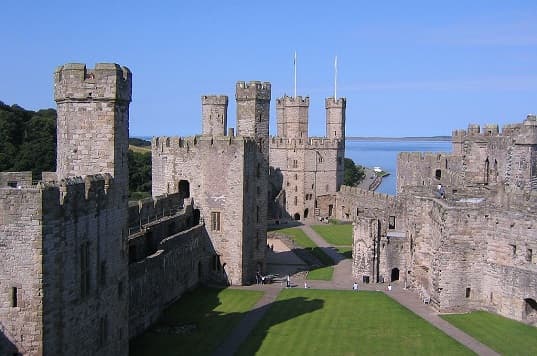
Construction began on Caernarfon castle in 1283 and reached its current state in 1323. Even though it was never
completed, it's still one of the most impressive medieval buildings in the UK. It was built to be part of a chain
of castles by King Edward I to conquer Wales and bring the country under the rule of England. The castle was
designed to be impenetrable and on 1408 a Welsh rebellion with the support of the French put that to the test.
They used siege engines and battering rams but the reinforced gate was built to resist battering rams and the high
walls were unscalable. Just 28 soldiers managed to repel the siege.
Cardiff Castle (Cardiff Council)
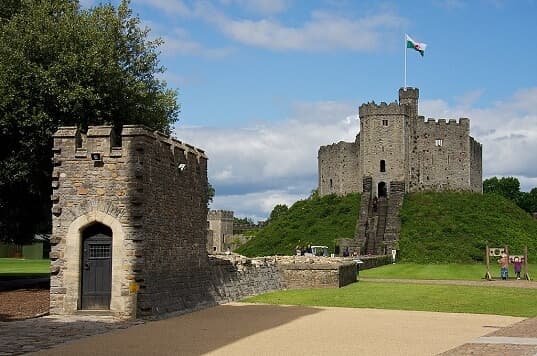
In the 11th Century, William the Conqueror built the foundations for Cardiff Castle on top of an ancient fort
constructed 1000 years earlier by the Romans. In fact, sections of the wall still contain stones used by the
Romans. Over the years the castle's defenses expanded but the original motte-and-bailey style of the Normans is
still there today. In 1403 the Welsh uprising of Owain Glyndwr besieged Cardiff castle, after running out of food
the defenders surrendered. Centuries later in 1766 Cardiff castle was transformed into a Georgian Mansion which
demolished the massive bailey wall and removed historic buildings for a garden.
Warwick Castle (Blackstone Group)
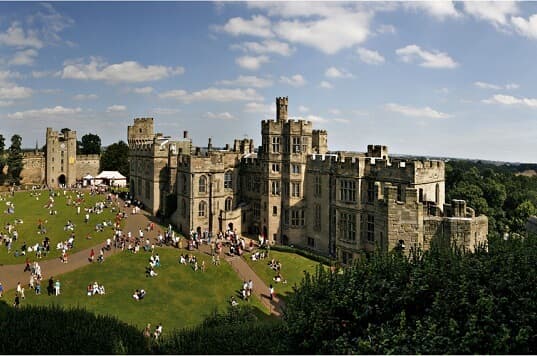
Built on a natural cliff overlooking the River Avon, Warwick Castle is at a vital strategic location to maintain
control of the Midlands, which is why William the Conqueror established a motte-and-bailey castle in Warwick in
1068 and why the future Kings of England entrusted the castle to the Earl of Warrick and some of England's most
powerful barons as a country house and to use it as a military garrison. During the Hundred Years' War, the facade
facing the city was refortified, giving rise to one of the best-known examples of military architecture of the
fourteenth century. Decades later the castle's defenses were put to the test in 1642 when it was besieged by
royalist forces, they opened fire on the castle, but did little damage before retreating.
Carrickfergus Castle (Northern Ireland Environment Agency)
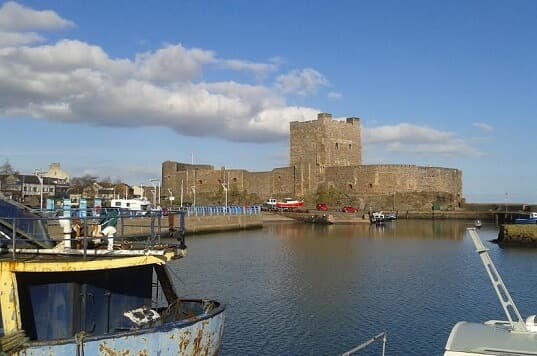
Carrickfergus Castle is a Norman castle in Northern Ireland. Overlooking the Irish Sea and surrounded by water on
three sides, it was built in an ideal location for defending, and it needed to be. The castle has been besieged by
the Irish, the English, the French, and the Scotts when in 1314 forces of Sir Robert the Bruce besieged the
castle. The siege lasted one year before the defenders ran out of supplies and surrendered. It was a short-lived
victory because within two years England recaptured the castle. It was a symbol of English occupation and for 750
years the castle was under continues military occupation.
York Castle (English Heritage)
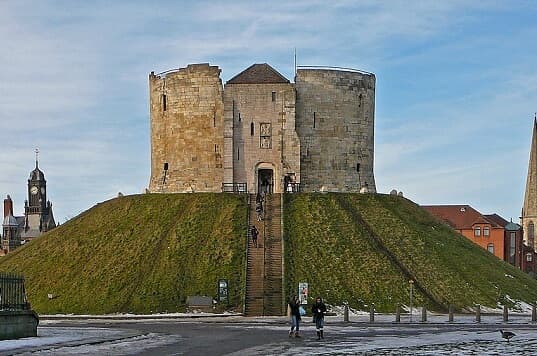
York castle was the center of royal power in northern England. William the Conqueror built a motte-and-bailey
style wooden keep in 1068 and in1244 King Henry III ordered it to be completely rebuilt in stone, the tower was
shaped an unusual but clever four overlapped circles like a four leaf clover. By the 16th century, the
fortifications had been extended beyond the castle to include a high stone wall which reached two miles long and
totally encircled the medieval city. In 1642 the city of York and its castle became the refuge for King Charles I
and in 1644 york was besieged by Roundhead forces. The siege lasted for more than two months before Charles
surrounded. By the 19th century, most of the once great fortress had been demolished. All that's left today is the
outer city walls and what is known as Clifford's tower.
Stirling Castle (Historic Environment Scotland)
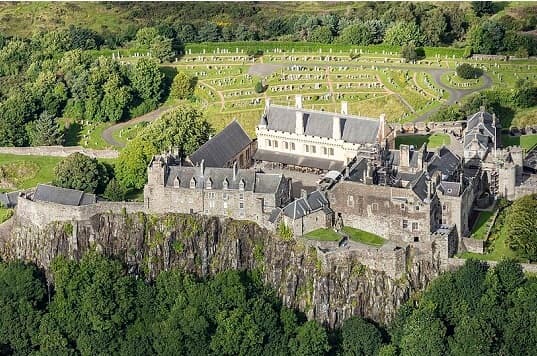
Surrounded on three sides by steep cliffs, Stirling castle played an important role in the history of Scotland due
to its strategic location on the River Forth. Like all castles, the one at Stirling was built to be impenetrable
and in 1296 it was put to the test for the first time during the battle of Stirling Bridge. The Scots lead by
William Wallice defeated the English army that fled and left Wallice the Castle. In 1303 King Edward I wanted
revenge, he commanded his army to surround the castle while they built 17 trebuchets. They took three months to
complete, during which time the defenders wanted to surrender but Edward refused. He used a trebuchet to destroy
the gatehouse and retake the castle. It was later recaptured by Robert the Bruce who destroyed the castle so his
enemies couldn't use it. 20 years later it was rebuilt by the Stuart family.
Dover Castle (English Heritage)
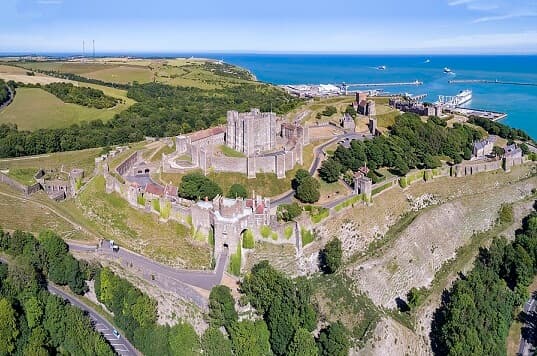
From a Roman lighthouse to Norman fortress, to Military fortress built by King Henry II, Dover castle is one of
the most impressive castles ever built. And it's defenses were tested under the rule of King John, when French
forces sieged the castle. The French soon realized that their siege weapons had little effect on the stone walls
so decided to tunnel under the foundations to make them collapse, this tactic is known as undermining, and they
succeeded but the defenses inside the bailey managed to repel the attack. The castle engineers expanded Dover's
underground tunnels to counter any future attempt of undermining. Centuries later in preparation for the
Napoleonic wars, gun placements, and cannon platforms were added. Though fully prepared, these defenses were never
put to the test.
Tower of London (The Crown)
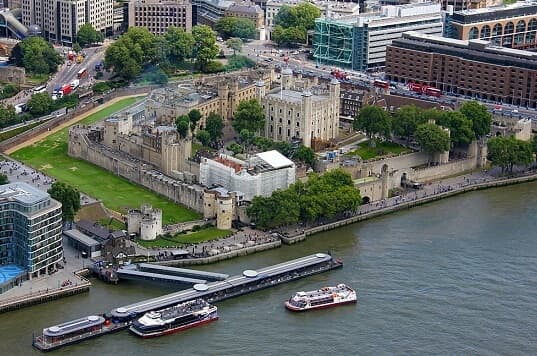
No top 10 list of British castles would be complete without the tower of London. The oldest standing stone castle
in England was founded in 1066 by William the Conqueror in a prime location next to the deepest inland port on the
river Thames. As the center for British monarchs in historic London, the Tower is intimately linked to British
history and has been a royal palace, military garrison, a prison, a mint, and even a zoo when the royal menagerie
was made accessible to the public. This iconic castle named the white tower due to its whitewashed stones went
through several stages of expansion, especially during the reign of Richard the Lionhearted, Henry III who added a
curtain wall and later Edward I adding a further curtain wall and a moat filled with water. Million's of tourists
now visit the site each year.
Edinburgh Castle (Scottish Government)
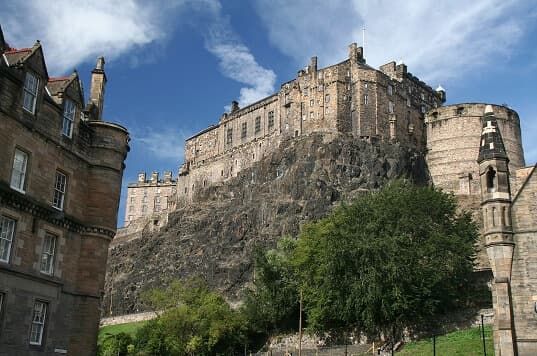
Edinburgh castle is another iconic British landmark located in the center of Edinburgh on Castle Rock. The origins
of the site are so old and unknown that it is difficult to establish the true date without speculation but
Edinburgh Castle has been one of the most fought over castles in the UK. King Edward I managed to capture the
castle when he used a trebuchet he named Warwolf, which is the largest trebuchet ever made. They sieged the castle
for 3 days before the defenders surrendered. The castle remained under English rule for almost 20 years, it was
only in 1314 that the castle was recaptured by Sir Thomas Randolph, the nephew of Robert the Bruce.
Windsor Castle (The Crown)
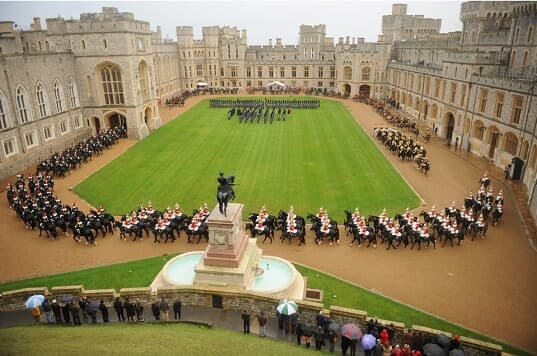
Like many of the castles in this list, Windsor Castle was originally built by William the Conqueror. At that time
the motte-and-bailey style castle was made of wood and gradually reinforced with stone walls. It was part of a
ring of defensive castles to ensure Norman dominance on the outskirts of London and control a strategic portion of
the Thames. The site was chosen partly for its defendable position. It is now one of the largest castles in the
world. Since the time of Henry I of England it has been inhabited by numerous British monarchs and has the longest
record for continual use of any castle in the world.